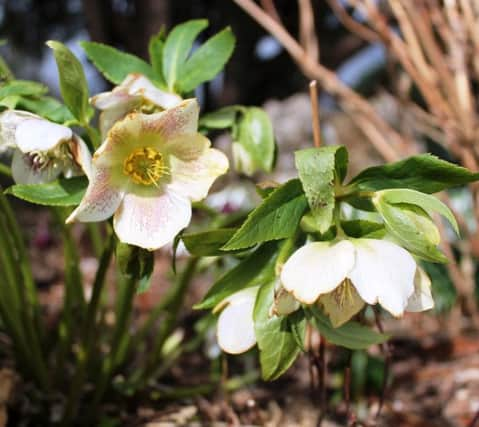Gardening: Cold comforts


Perky, plucky and stylish, they would stand out at any time of year. To enjoy them in context, to understand the kind of impact they can have, Google hellebore and find a garden near you where they been allowed to naturalise.
Any gardens that are still open to the public are all worth checking to see if they can give you that experience of drifts of hellebores under a canopy of trees.
Advertisement
Hide AdAdvertisement
Hide AdOnce you’ve enjoyed them in all their glory, you’ll be hooked. But remember, you don’t need acres of woodland to get the stress-busting, feel-good benefits of flowers.
The smaller species are ideal in rock gardens or containers and they’re a great way of bringing colour and life to areas under trees.
Helleborus x ballardiae ‘December Dawn’ flowers from mid-winter to early spring. Blooms are beautiful, white, flushed pink inside.
Helleborus cyclophyllus produces rather intriguing, yellowish-green flowers, which look wonderfully out of the ordinary.
Advertisement
Hide AdAdvertisement
Hide AdHelleborus x hybridus ‘Peggy Ballard’ is a true star of the hellebore family. The flowers are a deep reddish pink, with veined, purple-pink on the inside.
The family favourite, the Christmas rose, Helleborus niger, is the classic hellebore. It bears white flowers, which are in some cases strongly pink-flushed with greenish-white centres. ‘Potter’s Wheel’ is an especially lovely variety, bearing pure white flowers with delicate green “eyes”.
Moist, fertile, soil with a good crumbly structure is perfect (dig in plenty of compost, if necessary).
Exact requirements vary depending on species and situation, but dry or waterlogged soils must be avoided and plants need to be sheltered from strong or cold winds. Hellebores are easy to maintain – simply apply a leaf mould or organic mulch in autumn.
Advertisement
Hide AdAdvertisement
Hide AdGilbert White, observing nature around his 18th-century parish of Selbourne, Hampshire, noted that mothers in the district made a cure for intestinal worms from the leaves of hellebores. Even then, this was seen as a “violent remedy”, and the advice today is to avoid ingesting any part of the plant.
But perhaps there was a germ of truth in the thought that hellebores could have curative properties.
Appreciate their beauty in any way you can this winter, and see for yourself just how special hellebores really are.